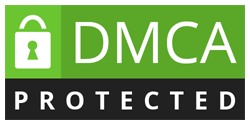Commodity loan rate ( Simple Quick Loan)
Commodity loan rate ( Simple Quick Loan)
The commodity loan rate may be the price per unit (pound, bushel, bale, or even
hundredweight) at which the actual Commodity Credit Corporation (CCC) offers
commodity loans to farmers for them to hold commodities for later on
sale, to realize advertising loan gains, or to get loan deficiency
payments (LDPs). Marketing assistance loan rates for that "loan commodities"
and peanuts for harvest years 2002 through 2007 are specified within the 2002 farm
bill (P. M. 107- 171, Sec. 1202, 1307). Nonrecourse loans are also available
from the Item Credit Corporation for processed beet and raw stick sugar.
References
- This short article incorporates public domain material in the Congressional
Research Service record "Report for Congress: Farming: A Glossary
of Conditions, Programs, and Laws, 2005 Edition" through Jasper Womach.
Community Benefit Loan
The U. Utes. Small Business Administration Neighborhood Advantage Loan program is actually
designed for new and existing businesses that require loans under $250, 000.
The loan may be used to finance a startup company or expand a current
small business or buy property. The SBA guarantees eighty-five percent of loans
as much as $150, 000 and 75 percent of loans more than $150, 000. ¹
Released in 2011, the Neighborhood Advantage program intends in order to expand access
to funds in underserved communities through allowing mission-focused,
community-based banking institutions – including a Licensed Development
Company – to provide this loan to smaller businesses. Greater access to credit score
can help spur firms to develop and hire, giving the economy a lift. ²
The SBA designates specific lenders throughout america to offer
Community Benefit loans. The first six lenders³ selected for that program
were: CDC Small company Finance, California; Cen-Tex CDC, Tx; The
Progress Fund within Greensburg, Pennsylvania; Eastern Maine Improvement
Corporation, Maine; Idaho-Nevada Neighborhood Development Financial
Institution, Idaho; Kentucky Highlands Expense Corporation, Kentucky.
Thirty-four additional lenders have since already been approved. 4
The commodity loan rate may be the price per unit (pound, bushel, bale, or even
hundredweight) at which the actual Commodity Credit Corporation (CCC) offers
commodity loans to farmers for them to hold commodities for later on
sale, to realize advertising loan gains, or to get loan deficiency
payments (LDPs). Marketing assistance loan rates for that "loan commodities"
and peanuts for harvest years 2002 through 2007 are specified within the 2002 farm
bill (P. M. 107- 171, Sec. 1202, 1307). Nonrecourse loans are also available
from the Item Credit Corporation for processed beet and raw stick sugar.
References
- This short article incorporates public domain material in the Congressional
Research Service record "Report for Congress: Farming: A Glossary
of Conditions, Programs, and Laws, 2005 Edition" through Jasper Womach.
Community Benefit Loan
The U. Utes. Small Business Administration Neighborhood Advantage Loan program is actually
designed for new and existing businesses that require loans under $250, 000.
The loan may be used to finance a startup company or expand a current
small business or buy property. The SBA guarantees eighty-five percent of loans
as much as $150, 000 and 75 percent of loans more than $150, 000. ¹
Released in 2011, the Neighborhood Advantage program intends in order to expand access
to funds in underserved communities through allowing mission-focused,
community-based banking institutions – including a Licensed Development
Company – to provide this loan to smaller businesses. Greater access to credit score
can help spur firms to develop and hire, giving the economy a lift. ²
The SBA designates specific lenders throughout america to offer
Community Benefit loans. The first six lenders³ selected for that program
were: CDC Small company Finance, California; Cen-Tex CDC, Tx; The
Progress Fund within Greensburg, Pennsylvania; Eastern Maine Improvement
Corporation, Maine; Idaho-Nevada Neighborhood Development Financial
Institution, Idaho; Kentucky Highlands Expense Corporation, Kentucky.
Thirty-four additional lenders have since already been approved. 4























No comments